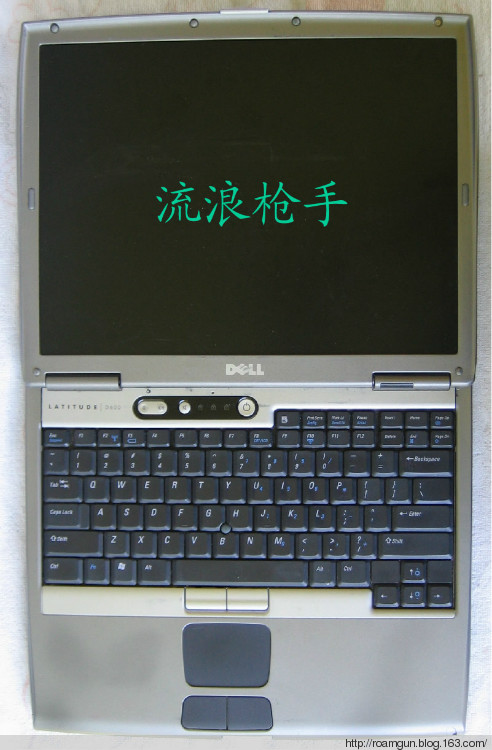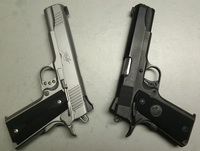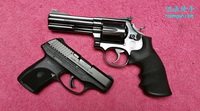There are several ways folks are getting their USB CDroms, Hard Drives, and other drives to work in DOS. One is using what’s known as DUSE driver system. The second method is using what looks somewhat like standard CDrom driver files and a USB driver. Both methods appear to require loading an usbaspiX.sys file first in config.sys in most cases. The third method is a bootdisk from a USB vendor. Method 4 is getting good reviews also.

METHOD 1 – The DUSE System
Example 1 Using DUSE
[config.sys]
device=a:\himem.sys
devicehigh=a:\emm386.exe
device=a:\usbaspi.sys
dos=high,umb
[autoexec.bat]
@echo off
duseldr a:\duse.exe
MSCDEX /D:USBCDROM /S /M:15 /V
Example 2 Using DUSE
[config.sys]
device=a:\himem.sys
DEVICE=a:\duse.exe
[autoexec.bat]
MSCDEX /D:USBCDROM /S /M:15 /V
METHOD 2 – The usbaspi.sys/usbcd.sys System – Example 1
As noted, this method seems just like loading IDE drivers, with the added entry of the usbaspiX file. The following are the relevant portions taken from a modified config.sys and autoexec.bat file which was designed to work with a Windows 98 OEM Bootdisk with the ramdrive.
The complete config.sys and autoexec.bat replacement files are available for download below, and you might want to start first with just copying them to your OEM bootdisk along with the relevant drivers and then experiment later with getting them to work on your Customized disk.
[config.sys – example 1]
device=himem.sys /testmem:off
device=usbaspiX.sys
device=usbcdX.sys /D:mscd001
[config.sys example 2 – USB Floppy in only port, “sometimes” allows switching to CDrom after boot]
device=himem.sys /testmem:off
device=ramfd.sys
device=usbaspiX.sys /W
device=usbcdX.sys /D:mscd001
[autoexec.bat]
LH %ramd%:\MSCDEX.EXE /D:mscd001 /L:%CDROM%
METHOD 2 – The usbaspi.sys/usbcd.sys System – Example 2
“I finally got my Belkin external drive enclosure with a WD 120gb drive to work in DOS, and then perform a GHOST image”, wrote don b. “Here’s the files and config.sys that worked.”
[config.sys]
device=himem.sys /testmem:off
devicehigh=usbaspi1.sys
devicehigh=di1000dd.sys
devicehigh=usbcd2.sys /d:USBCD001
LASTDRIVE = Z
[autoexec.bat]
don b. noted that either the standard Ghost or Win98X autoexec.bat worked as is.
METHOD 2 – The usbaspi.sys/usbcd.sys System – Example 3
Herbert H. writes: “I Just solved my problem by using the files from the “virtual” DOS drive ghost03 makes when you run interactive mode. It uses IOmega USB drivers and Guest.exe. It alowed me to use my Western Digital external USB HD in DOS.
[config.sys]
LASTDRIVE=Z
DEVICE = usbaspi4.sys /int /all
DEVICE = usbaspi5.sys /int /all
DEVICE = usbaspi5.sys /int /all /D1
DEVICE = usbcdX.sys /D:cd2
DEVICE = OAKCDROM.SYS /D:cd1 [For his IDE CDrom]
METHOD 3 – The datoptic System
A USB 4 DOS bootdisk has been posted here called dat.exe
The key driver files in dat.exe include:
usbaspi.sys 37,090 bytes
nj32disk.sys 15,808
sbp2aspi.sys 28,836
datoptic.com recommends the following config.sys for it’s USB/1394 products. It’s been reported tho that their drivers also work for other brands as well.
[menu]
menuitem=USB,USB Boot
menuitem=1394,1394 Boot
menudefault=USB,30
menucolor=7,0
[USB]
DEVICE = USBASPI.SYS
[1394]
DEVICE = SBP2ASPI.SYS
[COMMON]
DEVICE = NJ32DISK.SYS /R
LASTDRIVE=Z
METHOD 4 – The Iomega Way
Ben B. wrote:
I built a boot disk to access a USB external hard drive from DOS using drivers included with Norton Ghost. 2003. Since Ghost can write to the external drive in DOS, I figured I could copy its drivers. Turns out they are from Iomega. I wanted to access the external drive to run a disk wiping program. Autoexec.bat and Config.sys can be much improved, but this is the bare bones of the boot disk. Note that the Iomega drivers will work with any USB external hard disk and are not proprietary to Iomega drives (mine is a Western Digital).
Config.sys:
DEVICE=aspiehci.sys /int /all
LASTDRIVE=Z
Autoexec.bat:
@echo off
GUEST.EXE
Contents of my boot disk:
aspiehci.sys [Iomega USB 2.0 driver]
Autoexec.bat
Command.com
Config.sys
guest.exe [Another Iomega program required to access the USB drive]
Io.sys
Msdos.sys
Thanks Ben. Your letter has enough information tho to put folks on the right track to find the drivers themselves. If folks want to save some time tho they can get the drivers here.
+++++++++++++++++++++++++++++++++++++++++++++++++ +++++++++++++++++++++++++++++++++++++++++++++++++
DOWNLOAD FILES:
DUSE 4.4 DUSE 4.9 With Excellent Docs
The USBdrivers collection includes 5 different usbaspi.sys and 2 usbcd.sys files, the iomega drivers, the ramfd.sys driver, and the modified Win98 OEM config.sys and autoexec.bat files. You will have to experiment to see which one works for you.
The key driver files I’ve put together for you in the [USBdriver] collection include:
ramfd.sys 22,012 bytes
usbaspi1.sys 37,093
usbaspi2.sys 43,528
usbaspi3.sys 37,090
usbaspi4.sys 49,242
usbaspi5.sys 50,606
usbcd1.sys 5,509
usbcd2.sys 35,456
di1000dd.sys 16,368
Iomega:
aspiehci.sys 52,106
aspiehcj.sys 49,772 [renamed – older version of aspiehci.sys]
aspiohci.sys 42,242
aspinhci.sys 50,606
guest.exe 8.5 32,396
Please keep in mind that DOS USB CDrom/HDD/zip/etc. drivers is a brand new and developing area so there is no one single method that is guaranteed to work on every PC. If you try a few methods and have no luck, keep at it and dont worry as I’m confident there is enough information here to get at least 99% of the USB drives to work in dos.
A related article from theinquirer.net
Note that the files referred to in the article are included in my usb driver file download.
+++++++++++++++++++++++++++++++++++++++++++++++++ +++++++++++++++++++++++++++++++++++++++++++++++++
Note that the files posted here are pretty much the most complete collection of USB drivers around. Oddly enough, if you have a USB floppy drive connected to your PC some of these cdrom/hard/zip drive drivers will fail to load or the above bootdisk will fail to work.
In fact, I’d remove ANY USB device you dont need [eg cams, mice, printers, etc.] when using the above files to get DOS access to your Drives.
Note that after you get your business done in DOS with the USB drivers that they really should be remmed out when you’ve done what you needed to and now want Windows to use the drive correctly using Windows drivers.
Also note that windows really doesn’t like being installed from a usb device so if you only have a usb cdrom drive and need to install windows its best to copy the install files to a folder on your hard drive first and do the install from there. For example, if you are using win9X then make a folder on your hard drive called win98 and copy the files from the win98 folder on the cd to c:\win98 then run setup from there.
If using XP then make a folder on your hard drive called i386 and copy the files from the i386 folder on the cd to c:\i386 and run winnt.exe from there.
Please keep in mind that this is a new/developing area and I’m doing the best that I can in providing you with the info as it comes in so you are going to have to do some tweaking in the meantime.
+++++++++++++++++++++++++++++++++++++++++++++++++ +++++++++++++++++++++++++++++++++++++++++++++++++
TESTIMONIALS
From jorj:
I unpacked the zipped file usbdrive.zip on my desktop. Then I looked in it and noticed there are [5] usbaspi.sys and 2 usbcd.sys files. Randomly I took usbaspi1.sys and usbcd1.sys and placed them into win98 startup cd, together with the autoexec.bat and config.sys files, which repalced the original bat/sys files on the startup disk. Then I ran the startup disk and watched the screen. It worked right from the start.
From obiwan
I use your bootdisk site often and your resources have bailed me out on several occasions. I recently set up USB support on some ghost boot disks that we use here and was excited to say the least. It worked on both the Plextor USB CD-ROMS and a Pioneer CD-ROM I have in an ADS USB enclosure. Thanks for the great site and keep up the great work.
From B. K.
Thanks for your excellent website – I just figured out how to read a USB CD drive from DOS solely because of your excellent advice.
From Daniel, Ottawa (Canada)
I just purchaced a USB 2.0 Drive Kit at COSCO. I placed an IDE hard drive in it with all the images of PCs that I GHOST on a regular basis. Thanks to all the info provided on your website, I can now boot in DOS with USB support. I then run my GHOST floppy, and choose the correct image from the “USB Hard Drive”. I no longer need multiple CDs… I no longer have to change CDs every 5 minutes for a full hour… I no longer have to burn tons of CDs… Thank you for your great website!
From Angelos
USB to Dos drivers, finally work. After many hours and attempts, I have managed to mount my SuperTalent External HD using the DUSE 4.9 driver found on this excellent site. The Ghost 2003 and DUSE 4.9 fit on a floppy so now I can image my HD my friends HD and so on. Thank you bootdisk you are the greatest.
From Carmen (Spain)
I just want to say thanks to ben b. for sharing his experience. I was able to find the files I needed on the Internet and got my usb hard drive to work which did not come with dos drivers.
From A Gorman (UK)
This site is excellent. Downloaded dos usb drivers and it works great.
From Wim (Holland)
Thanks to [this page] I got my Xterasys – USB 2.0 casing with a WD 80 gig HD, to boot from a DOS bootable floppy disk. Instead of loading the DEVICE=aspiehci.sys /int /all from config.sys [ie the Iomega driver Ben B. used], I loaded DEVICE=ASPIOHCI.SYS /int /all, also a Iomega driver. It works GREAT!!!!







